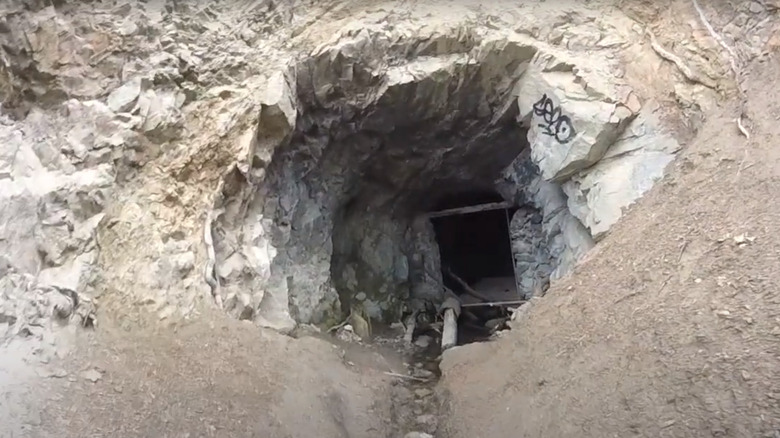For some travelers, staying above ground just isn’t enough. That’s where caving comes into the picture. It’s a popular activity among adventure-seekers who are looking to discover known subterranean pathways and potentially unexplored routes too.
While caving is a thrilling experience, it also comes with inherent dangers. The Southeastern Cave Conservancy lists the top hazards associated with caving as falling rocks, getting lost, losing light, and injuries that happen as a result of falls. More serious risks include getting stuck, encountering flooding passages, or developing hypothermia when you’re not prepared for exposure to frigid underground temperatures. The danger only increases when you set your sights on unregulated cave systems, which is exactly what you’ll find waiting for you at Blue Hawk Mine in Canada’s scenic province of British Columbia.
It’s relatively common for abandoned mines to be restructured into areas that are suitable for tourism after they’re decommissioned. Many have bracing added and underground activities and walkways built. It’s typical for these mines to offer guided tour options when they’re well-maintained and certifiably safe. But that isn’t the case with Blue Hawk Mine, which was simply left as it was when production was ultimately abandoned at the site decades ago. These days, cavers still regularly attempt to explore Blue Hawk Mine despite known risks, ranging from cold-water sinkholes to cave-ins.
A historic destination with unregulated access

Roadworthy Revivals/YouTube
The abandoned Blue Hawk Mine and cave system is found in a wooded area along a slope overlooking Okanagan Lake from the East in Kelowna. The mine first belonged to the Blue Hawk Syndicate back in the 1930s. At that time, the company was looking for both gold and silver deposits. While there was some success on both fronts, it ultimately wasn’t enough to justify keeping the mine operational.
After the mine was abandoned by Blue Hawk, work continued to be done in the caves by various companies, organizations, and individuals through the 1980s. Work included the continued expansion of the mine, as well as drilling and rock sampling. As these efforts subsided, the caves became a place that intrigued locals and visitors alike with a passion for underground adventure. According to official government records, ownership has shifted frequently since and is currently difficult to pin down, which is part of why the mine has become a focal point for miners, scientists, and explorers.
While Blue Hawk Mine only measures back around 300 feet in total, that’s more than enough to capture the attention of thrill-seekers from across the map. The mine doesn’t have any reinforcing infrastructure in place or installed lighting. Its maze of many small passages is also known to be home to pools of water, creating a damp air effect year-round. Combined, these features make Blue Hawk Mine equal parts irresistible and dangerous for those who continue to make their way inside.
Important safety considerations

For many cavers, exploring an abandoned mine like Blue Hawk comes with a thrill of the unknown. Unfortunately, it can also lead to potentially fatal scenarios when overzealous visitors set out unprepared. While hikers and cavers continue to explore Blue Hawk Mine, its unregulated status means nobody else is keeping track of when they’re there. This presents a massive problem if things go wrong.
If you consider yourself an extreme sports enthusiast and have plans to head to Blue Hawk Mine in the future, taking time to prepare is essential. The recommendations made by the U.S. National Park Service when it comes to cave safety can just as easily be applied to the Blue Hawk Mine. Above all, it’s advisable for explorers to always wear sturdy and closed-toe hiking boots. In wet underground sites like Blue Hawk Mine, these are particularly important in preventing falls.
Wearing long sleeves, pants, and layers is a good idea as well to protect against cold and fluctuating temperatures. Always make sure to explore in a group and have at least one person carrying a flashlight if everyone isn’t outfitted with individual headlamps. You’ll want extra batteries and water on hand as well as a plan for what to do if someone is injured during your visit. Letting someone who isn’t exploring know where you’re going is also important when you’re spending time in an abandoned mine like Blue Hawk.

